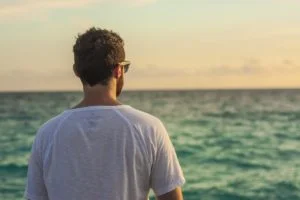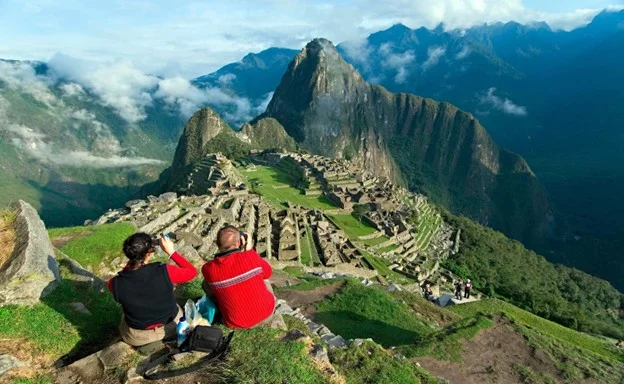
Short vs Classic Inca Trail: How Much Time Do You Need? | Travel Blog
If you ever dreamed to live millennial culture, embark on an adventure of a lifetime. Discover the hidden treasures along the iconic Inca Trail to Machu Picchu in Peru.
This is an experience that you can have once in a lifetime. The breathtaking Inca Trail will take you to the perfect place at the Andean mountain range. You will see a glimpse of the history and site proof.
With every step, you will be reliving the history imprinted on those paths.The Inca Trail winds through incredible tropical forests, high-altitude lakes, and mysterious ruins. Offering an memorable experience that combines breathtaking landscapes with a rich cultural heritage.
If you are planning to do the inca trail this year, start making the arrangements. Remember the Inca Trail to Machu Picchu is considered one of the best treks in the world and therefore Inca Trail permits are in demand all year.
The classic inca trail ( also known as Camino Inka ) is a hiking trail in Peru. It starts at a place called KM 82. This is a well known place that as the name suggests starts at the KM 82 along the trailway from Cusco.
The trail finds its end at the Lost City of Machu Picchu. You will find two overlapping trails, the longest commonly called “classic”, involves camping nights and longer days.
You also have the short one day route, easier for the less adventurous people and friendly for elderly and kids with less physical condition.
Table of content
How Difficult Is the Inca Trail? Understanding the Trekking Challenge
Well this must be a straightforward question that everyone wants to know and the answer is yes. It’s a fairly difficult trail that needs physical preparation. Also it will depend on the option you choose.
Once you arrive in Cusco the climatization process starts, the altitude in Cusco is the first challenge for most people, spending a day at least in the city is necessary to check your adaptability. It would depend for each person.
The Inca Trail can become a challenging adventure or a fairly easy one depending on various factors that you need to be aware of before starting the experience. These elements are the following.
Terrain, the overall distance and altitude, the fast changes in altitude, adaptability and your specific fit level.
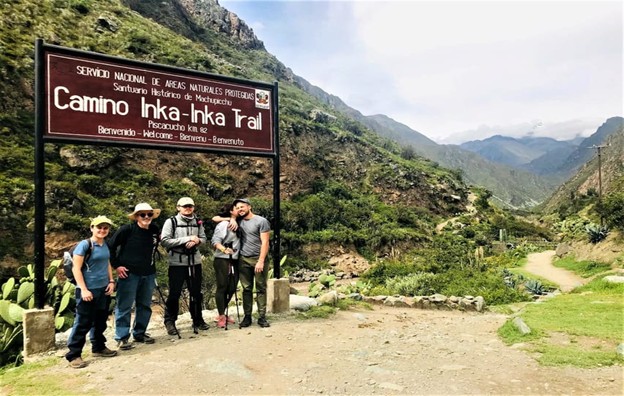
Best time to Visit
The ideal time for many will depend on your personal preference. Months from May to October are generally the ones most preferred by most, specially because the festival of the Sun “ Inti Raymi” takes place. We have incredibly sunny weather, with completely clear skies. However, this is also the time when Cusco is most crowded.
Equally interesting option is the months from October to April. This is a more humid time of year, and nature comes alive with its greenery due to the presence of rain. It must be checked if sections of the inca trail are closed due rain.
The Longest: Classic Inca Trail - 4 Days
The classic Inca trail route is characterized by rapid and repeated changes in altitude as you travel along the hike to Machu picchu.
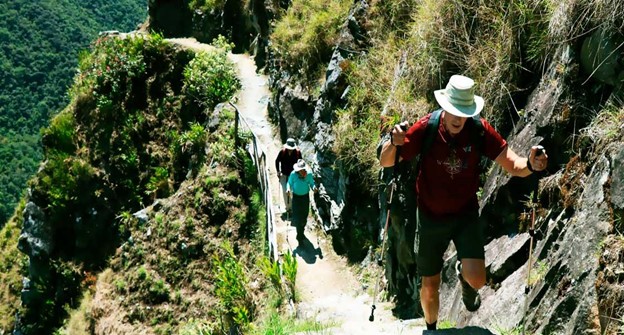
Is this the route for you?
If you love challenges, this activity is not for everyone. Steep steps await you while ascending to Wayllabamba (3,100 meters) on your way to Machu Picchu. If you're in good physical shape, consider this path.
You definitely won't see that many people on this trail, only the prepared ones attempt it. You'll find the perfect combination of adventure, culture, and nature.
Main Challenges:
- The most significant elevation changes on this route occur during the descent into the Apurimac Canyon (range from 4000 meters to 2000 meters). This is an example of how the elevation changes vary throughout the route. The highest altitude you can reach is 4215 meters, so it's important that you're ready for that level of challenge.
- We found that the route takes 4 days to complete. A path that can be exhausting, with long days of hiking each day.It is important to take into account your durability.
- On this trail, you'll also encounter changes in temperature and humidity, along with changes in altitude. The lowest points are very hot, so be prepared.
- Steep paths and endless steps can be the main challenge for participants. We have up to three continuous hours of hiking, so rest periods will be necessary.
Can Everyone do it?
- For this specific route, a person with moderate physical fitness is required to complete the trail.
- Older adults should definitely consult their doctor and arrange for medical assistance, if necessary.
- Children under 12 are not recommended for this specific route.
- There will be a team of professional guides who are fully familiar with the route and can assist you as needed.
- We'll take into account that the guides and porters will accompany you throughout the entire trip. You'll have porters who will carry suitcases, bags, and all the necessary equipment to accompany you on your journey. You'll only need to bring a backpack with what you need for the trip.
- Day 1 and day 4 will be the shortest, with a relatively easy 3 to 4 hour hike. Days 2 and 3 will be the longest, with days that can last up to 8 hours, starting at 6:30 A.M. and ending at 3:00 P.M.
DAY - 1 Ascent to Wayllabamba
On the first day after setting out from km 82, a gentle climb awaits you along the Inca trails. The legacy of the Inca culture gradually emerges. We visit places like Llactapata as we continue along the banks of the Urubamba River. We continue our ascent to Wayllabamba, where we reach our campsite, ready to rest and eat your lunch.
Day - 2 Warmiwañusca (The dead woman pass)
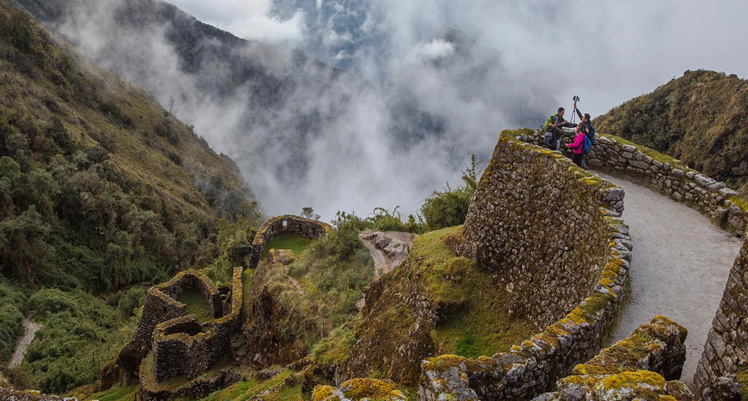
This is the point of greatest effort on the entire Warmiwañusca route.The Dead Woman Pass is a demanding path, narrow steps await. The climb to the Andes mountain is challenging, but the wonderful views are rewarding. The final part of the route takes us to a valley where the second day ends.
Day - 3 The cloud Forest
The second day takes us to a different landscape. We'll discover the cloud forest, surrounded by plants and moss. We'll explore the circular tower of Runquraqay, a site dedicated to Inca surveillance. One of the most captivating places on this stretch is Phuyupatamarca, "Town in the Clouds", an important ritual center for Inca culture.
Day - 4 Sun Gate
The final and fourth day, undoubtedly the most anticipated of all, the arrival at the Sun Gate. The entrance to the citadel of Machu Picchu and Huayna Picchu.
The Sun Gate is crucial for its importance as an astronomical observatory. It is aligned with the Pleiades constellation and the snow-capped Veronica and was strongly linked to the Andean New Year.
We begin the descent to one of the 7 Wonders of the Ancient World, recognized by UNESCO. We explore its ancient sites. The journey culminates with a continuation of the descent to Aguas Calientes, where, after a good rest, we return to Cusco by train.
The Short Inca Trail - 2 Day Trail
The difficulty of this short Inca trail version is moderate. You can practically complete it without any problems. We'll have shorter steep trails upwards, avoiding sudden changes in altitude that can sap your stamina.
Altitude remains your first and main factor of fatigue. That's why it's important to spend a day or two acclimatizing to the altitude when you arrive in Cusco. This will give you time to explore the city and the Sacred Valley, an important center of the Inca Empire.
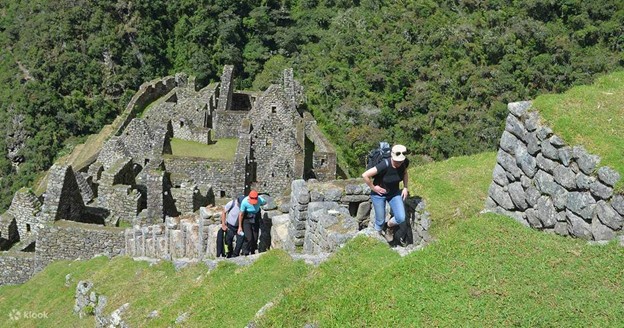
Is this the right route for you?
If you're willing to experience the Short inca trail but don't have enough time to do the long route. If you're looking for a more relaxing tour that's more your style, sleeping in a comfortable hotel bed instead of camping,this is a good option.
You'll also enjoy wonderful landscapes, great views, and the entire legacy left by the Inca Empire as you arrive at Machu Picchu. If you prefer sleeping in a comfortable hotel bed instead of camping. You still have the experience of arriving through the Sun Gate at the citadel of Machu Picchu.
Main Challenges:
- Unlike the classic route, this one is much more peaceful. Remember that a hike on flat terrain at sea level is very different from one at 3,000 meters, so the difficulty will increase depending on where you're coming from.
- The classic route has much fewer abrupt changes in altitude, so the effort is less. The highest climb you'll make will be to Wiñay Wayna.
- You don't need to camp if you prefer, you can stay in Aguas Calientes in a comfortable hotel.
Days 1 - 2 : We will visit important sites along the road, including:
Chachabamba: It was built where the mountains meet. We can find fascinating buildings on a flat esplanade. Chachabamba is an archaeological inca site located at the beginning of the trail.
Wiñay Wayna: This is a key site on the journey. It is an important center of Inca agriculture.The main attraction of this site is undoubtedly its agricultural terraces. This place is a must-see for its beauty.
Sun Gate (Inti Punku)
.jpg?alt=media&token=adb6ee31-cdbf-41cc-8209-5d7e623b0e8d)
This is an iconic landmark on our Inca Trail journey. You'll come across the sacred sun gate, a portal that leads to Machu Picchu. Important cosmic and astronomy This is undoubtedly one of the greatest motivations for undertaking this trip. We finally arrived at Machu picchu.
Don't Forget These 6 Tips Before Your Inca Trail
Reservations in advance: Only 500 permits are issued each day, including guides and porters. It is important to apply at least 5 months in advance.
Tour Operator: Choose operators authorized by the Ministry of Culture with good reviews. Reputable and authorized porters and guides are key to a satisfactory experience.
Physical Preparation: Although it is not an extreme hike, it does require a couple of days of acclimatization in Cusco. It also requires periods of training in walking and hiking to improve your cardio.
Equipment: The essentials packing list include appropriate hiking boots. Different types of clothing and outerwear for different temperatures. Nutritious snacks will be a great help during the journey. Trekking pole is a must to help you with stability and support.
Hydration: It's important to carry water with you at all times, you can never have too much. It’s important to drink plenty of water at all times to replace the liquids that are lost through sweating.
Enjoy the Experience: We have an important road ahead, with many challenges and experiences that will be etched in our memories forever. Every moment will bring challenges, but the experience finally will have been worth every second, so all that's left is to enjoy it.
Whether you choose the 4-day inca trail or the 2-day Inca Trail, the experience will be equally rewarding. Your physical condition may affect your experience, but don't forget that you'll always be accompanied by guides and porters ready to assist you. Together, you can achieve the great goal that awaits you.
Check Our Suggested Tours:
- From the Heart of the Jungle to the Sacred Mountain: A Luxury Expedition Through the Amazon & Ausangate 16d/15n
- Following the Path to the Sacred Sun Gate
- Peru By Belmond Tour
- Family Adventure Tour
- The Soul of Two Worlds: A Grand Amazon & Andes Expedition 14d/13n
- Honeymoon In Peru - Peru Honeymoon Packages
